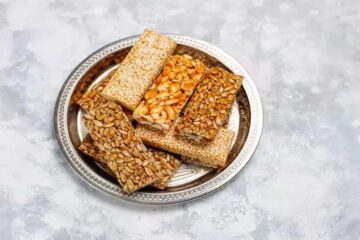Quinoa: A Nutrient-Packed Superfood

Quinoa, a staple of South American cuisine for millennia, has gained global recognition as a superfood owing to its nutritional richness and culinary versatility. Let’s delve into the marvels of quinoa, exploring its origins, nutritional profile, culinary applications, and considerations for consumption.
Introduction to Quinoa
Originating from the Andes region of South America, quinoa (pronounced KEEN-wah) has a storied history dating back over 3,000 years. It served as a dietary mainstay for the Inca civilization and continues to captivate modern kitchens worldwide. Unlike traditional grains, quinoa is a pseudocereal seed, offering a gluten-free alternative for those with dietary restrictions.
Nutritional Value
Quinoa earns its superfood status with its impressive nutrient composition. A one-cup serving of cooked quinoa provides a wealth of essential nutrients:
- Calories: 222
- Carbohydrates: 39g
- Protein: 8g
- Dietary Fiber: 5g
- Fat: 4g
- Iron: 15% of the Daily Value (DV)
- Magnesium: 30% of the DV
- Manganese: 58% of the DV
- Phosphorus: 28% of the DV
- Potassium: 9% of the DV
- Folate (Vitamin B9): 19% of the DV
Health Benefits
Quinoa offers a multitude of health benefits, including:
- Complete Protein Source: Providing all nine essential amino acids, quinoa is an ideal protein source for vegetarians and vegans.
- Nutrient Density: Packed with vitamins, minerals, and antioxidants, quinoa promotes overall health and well-being.
- Heart Health: Rich in fiber, potassium, and magnesium, quinoa supports cardiovascular health.
- Gluten-Free: Suitable for individuals with celiac disease or gluten sensitivity, quinoa is naturally gluten-free.
- Weight Management: High in protein and fiber, quinoa enhances satiety and aids in weight management.
Culinary Applications
Quinoa’s versatility shines in various culinary endeavors:
- Grain Replacement: Substitute quinoa for rice or couscous in diverse recipes.
- Salads: Craft nutritious salads by pairing cooked quinoa with fresh vegetables and flavorful dressings.
- Porridge: Enjoy quinoa as a hearty breakfast option, cooked with milk or dairy-free alternatives and sweetened with honey or fruits.
Types of Quinoa
While white quinoa is the most common variety, red and black quinoa offer distinctive flavors and textures, adding depth to culinary creations.
Buying and Storing
Select well-packaged, moisture-free quinoa when purchasing. Store it in a cool, dry place in an airtight container to maintain freshness for up to two years.
Precautions and Side Effects
Though generally safe, quinoa may cause digestive discomfort due to its saponin content. Rinsing quinoa before cooking mitigates this effect. Individuals with oxalate kidney stones should consume quinoa in moderation due to its oxalate content.
Incorporating Quinoa into Your Diet
Explore diverse ways to enjoy quinoa:
- Quinoa Bowls: Create balanced meals by combining quinoa with vegetables, proteins, and flavorful sauces.
- Stuffed Peppers: Utilize quinoa as a stuffing for bell peppers alongside vegetables and seasonings.
- Quinoa Pilaf: Prepare quinoa with aromatics and herbs for a delectable side dish.
- Quinoa Breakfast: Replace oats with quinoa in morning porridge for a protein-rich start to the day.
- Baking: Incorporate quinoa flour or flakes into baked goods like bread, muffins, or pancakes.
Frequently Asked Questions
- Grain or Seed: Quinoa is a pseudocereal seed, gluten-free and versatile.
- Rinsing Quinoa: Rinse quinoa under cold water using a fine-mesh sieve.
- Freezing Quinoa: Cooked quinoa can be frozen in airtight containers.
- Quinoa Varieties: Red, black, and white quinoa offer distinct flavors and textures.
- Weight Loss: Quinoa’s protein and fiber content aid in satiety and weight management when part of a balanced diet.












